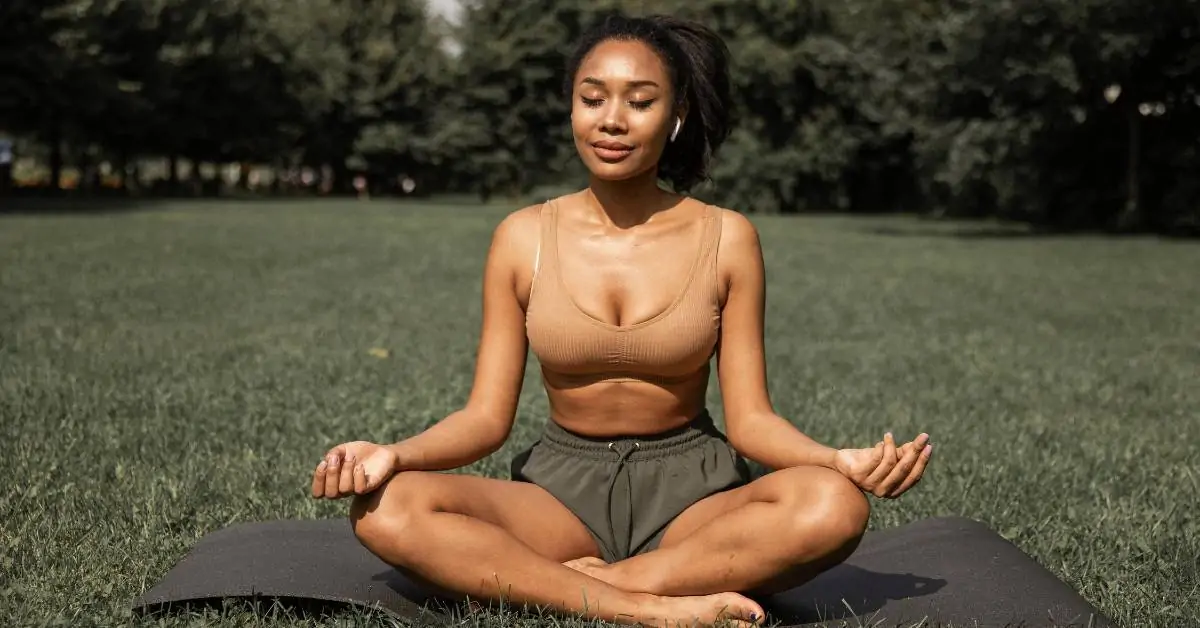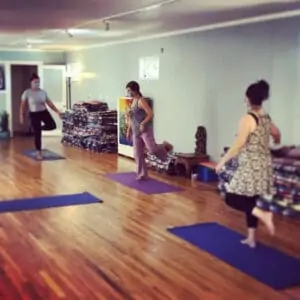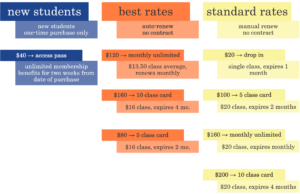Take an easy, full breath in, and allow your breath to release naturally and fully. What did you notice? Where did you inhale end, and what did it feel like? Where did your exhale end, and how did that feel? What is an easy breath, in or out? Are you breathing easily?
Do this a few more times. Easy, full breaths in and out, but without pushing, pulling, forcing or straining. Notice how you, your body, your mind, your breathing feels as you take a few more easy and full breaths in and out.
You may know that I pretty much never say, “Take a full or deep breath in,” in class. So why did I say it just a moment ago? Simply to let you feel your body a little bit differently. To feel where and how you breathe and what that may mean.
Now return to your normal breathing pattern and pacing. No need to do anything deliberate. Simply return to breathing normally.
What do you notice?
Once you have returned to your normal breathing pattern for a minute or so, start to breathe just a little more deeply. Don’t rush or force. Simply allow your breath to fill your lungs and ribs a little more fully. Just a little. Do this a few more times.
Be careful that you aren’t breathing too fast or forcefully. Allow your normal breath to deepen just a little bit. Easily. Steadily.
Now notice
- At the end of your inhale: Where do you feel the end of your natural ability to keep an easy inhalation? Notice it and continue with your natural breath and allow your exhale to happen. Letting go easily.
- At the end of your exhale: Where do you feel the end of your natural ability to keep an easy exhalation? Notice it and continue with your natural breath and allow your inhale to happen, your breath flowing in naturally.
- Where you feel the end of your inhale – this is tension.
- Where you feel the end of your exhale – this too is tension.
- Really? Yes. Really.
You are a normal person, living a normal life of sports, hobbies, manual labor, emotional ups and downs, walking, standing, sitting, (sometimes too much, and sometimes too little). And you have been doing so for many years and decades.
These normal, everyday activities have created tension in your body and mind – much that has not been released over the years – a habit of tension – an unconscious holding of everyday life and tension. Now the accumulated effects of those tensions have started to impact you in a variety of ways. Breathing optimally is one of those areas.
I won’t go into all the science and numbers of what we know about proper breathing right now, but suffice it to say that the older you get, the more your doctor EXPECTS your breathing capacity and health to decline. As far as he knows, that’s normal. He or she will even describe it a, “you’re just getting older, and this is what naturally happens.”
I’m here to tell you, it’s not. So let’s just start with easy breathing and see how quickly and easily your body returns to it’s normal breathing capacity and flow.
Easy Breathing
Lie down, with your knees raised, and your head cushioned if needed. It’s ok if you are sitting comfortably in a chair. Place one hand on you belly, above your navel, and place your other hand on your chest.
Breathe naturally and normally. Allow your body to breathe for you.
Notice your hands and how they move with your breath. Both hands should be moving with your breath. Your hands rise up with your inhale. Your hands lower as you soften into your exhale.
If you notice that they are not moving together with your breath you may need to teach your breath and body to move differently.
If 1 hand is not moving at all, simply press your hand down, and place a little extra pressure there. Breathe intentionally into that area. Let your breath move to that area and into your hand, and allow your breath to move your body and your hand. Be mindful of the difference between breathing intentionally and breathing forcefully. Breathe easily and intentionally this way a few times.
- Then allow your body to breathe easily in this way on it’s own. Both hands will move easily, slowly and steadily together. Your belly and chest rising in a soft, easy expansion. Your belly and chest softening and sinking toward your back and toward the floor.
- Now allow the sides of your ribs and torso to move this way with each breath. The tissues of your ribs and torso softening and moving with each and every breath. Moving down through your hips, up through your ribs, armpits and shoulders, and neck and throat.
- When you are ready, allow the back of your ribs and torso to also soften and move with your natural breath. The tissues of the back of your lungs, ribs, your whole torso softening and moving with each easy breath in, and each easy breath out. Your hips and waist, your ribs, shoulder blades and shoulders, perhaps even your neck and head move softly and subtly with each easy breath.
Practice this once or twice every day for 10-15 minutes if you find you have difficulty breathing, if you are particularly stressed, or if you are having difficulty with Ujjayi.
If you are doing Ujjayi, begin with Easy Breathing for a few minutes, then move naturally into your Ujjayi breath and notice if your Easy Breathing changes your sound or breath in any way. You may notice that the sound and breath become more soft and subtle. As you continue this Easy Breathing preparation, notice now how powerful your breathing practice can be!
Namaste,
Kris






